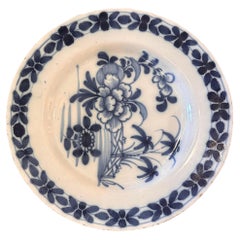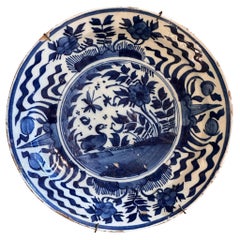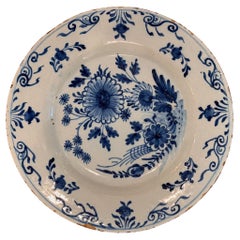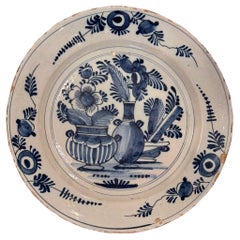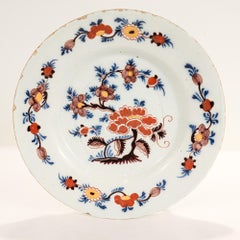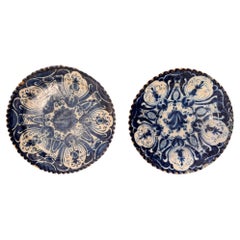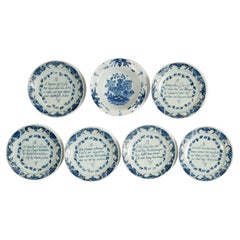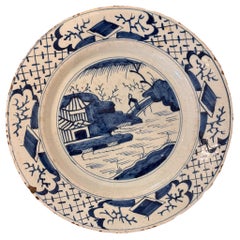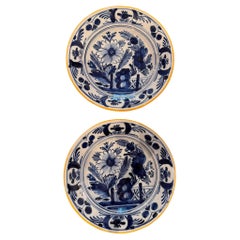Delft Plates
Antique 19th Century Dutch Delft and Faience
Delft
Antique 19th Century Dutch Delft and Faience
Delft
Antique Early 19th Century Dutch Delft and Faience
Delft
Antique Mid-18th Century Dutch Delft and Faience
Delft
Antique Mid-18th Century Dutch Baroque Delft and Faience
Delft
Antique 18th Century Dutch Delft and Faience
Delft
Antique Late 18th Century Dutch Baroque Delft and Faience
Delft
Antique 18th Century Dutch Delft and Faience
Delft
Antique Early 19th Century Dutch Delft and Faience
Delft
Antique 18th Century Dutch Baroque Delft and Faience
Ceramic, Pottery
Antique Late 18th Century British Baroque Delft and Faience
Delft
Antique 18th Century Dutch Baroque Delft and Faience
Delft
Antique Late 17th Century Dutch Delft and Faience
Ceramic, Faience
Antique 1760s Dutch Delft and Faience
Ceramic, Faience
Antique Mid-18th Century Dutch Delft and Faience
Ceramic, Faience
Antique Early 18th Century Dutch Louis XIV Delft and Faience
Earthenware, Delft, Faience
Antique 18th Century Dutch Baroque Delft and Faience
Delft
Antique Mid-18th Century British Delft and Faience
Delft
Antique Mid-18th Century British Delft and Faience
Delft
Antique Mid-18th Century Dutch Chinoiserie Delft and Faience
Earthenware, Delft, Faience
Antique Early 19th Century Dutch Delft and Faience
Delft
Antique 18th Century Dutch Delft and Faience
Delft
Antique Mid-18th Century Dutch Rococo Delft and Faience
Earthenware, Delft, Faience
Antique Early 19th Century Dutch Rococo Delft and Faience
Delft
Antique Mid-18th Century Dutch Rococo Delft and Faience
Delft
Antique Early 18th Century Dutch William and Mary Delft and Faience
Delft, Faience
Antique Early 19th Century Dutch Rococo Delft and Faience
Delft
Antique 17th Century Dutch Baroque Delft and Faience
Earthenware, Delft
Antique Early 18th Century Dutch Delft and Faience
Ceramic, Faience
Antique 1760s Dutch Delft and Faience
Ceramic, Faience
Antique 17th Century Dutch Baroque Delft and Faience
Earthenware, Delft, Pottery
Antique 17th Century Dutch Baroque Delft and Faience
Earthenware, Delft
Antique Mid-18th Century Dutch Delft and Faience
Ceramic, Faience
Antique Early 18th Century Dutch Delft and Faience
Ceramic, Faience
Antique Early 19th Century Dutch Chinoiserie Delft and Faience
Earthenware, Delft, Faience
Antique Early 19th Century Dutch Chinoiserie Delft and Faience
Delft
Antique Early 19th Century Dutch Decorative Dishes and Vide-Poche
Delft
Antique Mid-18th Century English Chinoiserie Delft and Faience
Delft
Antique Late 17th Century Delft and Faience
Delft
Antique 18th Century Dutch Other Delft and Faience
Ceramic
Antique 18th Century Dutch Baroque Delft and Faience
Delft
Antique Late 18th Century British George III Delft and Faience
Delft
Antique Early 19th Century Dutch Baroque Delft and Faience
Delft
Antique Mid-18th Century English Chinoiserie Decorative Dishes and Vide-...
Delft
Antique 18th Century British Baroque Delft and Faience
Delft
Antique Mid-18th Century English Georgian Delft and Faience
Delft
Antique Mid-18th Century English George III Delft and Faience
Ceramic
Antique Late 17th Century Dutch Delft and Faience
Ceramic, Faience
Antique Early 1800s Dutch Rococo Delft and Faience
Delft
Antique 18th Century British Georgian Delft and Faience
Delft
Antique Mid-18th Century Dutch Baroque Delft and Faience
Delft
Antique 18th Century Dutch Chinoiserie Delft and Faience
Delft, Faience
Antique 18th Century Dutch Chinoiserie Delft and Faience
Delft, Faience
Antique 18th Century Dutch Chinoiserie Delft and Faience
Delft, Faience
Antique 18th Century Dutch Delft and Faience
Delft, Faience
Antique Early 19th Century Dutch Chinoiserie Delft and Faience
Earthenware, Delft, Faience
Antique Early 19th Century Dutch Chinoiserie Delft and Faience
Earthenware, Delft, Faience
Antique 18th Century Dutch Delft and Faience
Delft, Faience
Antique 18th Century Dutch Delft and Faience
Delft, Faience
Antique 18th Century Dutch Delft and Faience
Delft, Faience
- 1
Delft Plates For Sale on 1stDibs
How Much are Delft Plates?
Finding the Right Delft And Faience for You
The unique graceful design and classic style of antique Delft pottery and faience make these pieces an exceptional addition to any dining room.
The popularity of the blue-and-white porcelain developed in 14th-century China inspired Delft and faience pottery in Europe. The global expansion of trade through the Dutch East India Company led to the import of numerous examples of Chinese porcelain, resulting in the creation of Dutch Delftware, which is the term generally used to describe the tin-glazed earthenware that Dutch potters used. There were other imitations of Chinese porcelain produced by ceramicists throughout Europe, but Delftware was the most successful. This iconic tradition — the subject of a 2020 exhibition at the Kunstmuseum den Haag — resembled Chinese porcelain but was more affordable.
True blue Delftware originates only from a single location: Delft in the Netherlands. These precious pieces pair well with French faience. Unlike Delft plates, Delft vases and other pieces of Delftware, French faience utilizes a lead-and-tin glaze. This earthenware has roots in late-16th-century France. French Provincial Delft and faience tend to feature snow-white lacquered surfaces with colorful painted images or floral designs.
In terms of elegance and versatility, Baroque Delft and faience always impress. The most extravagant and boldly hued pieces are Rococo Delft and faience. Plates, tureens and other objects made in this style are frequently ornate and intricately decorated, making them ideal for display. Modern Dutch design masters often incorporate vintage decor into their contemporary designs, and Delftware items are a popular choice.
Browse antique Delft pottery and faience now on 1stDibs.
- Is Delft Blue still made?1 Answer1stDibs ExpertApril 5, 2022Delft Blue is in fact still made today. There is one factory left, the Royal Dutch, which has been in operation since 1653. It continues to make delft blue using the traditional methods. You’ll find a variety of Delft blue products from some of the world’s top sellers on 1stDibs.
- How can I tell if Delft is real?1 Answer1stDibs ExpertApril 5, 2022To tell if Delft pottery is real, look at it under a magnifying glass. Authentic Delftware should show visible brushstrokes, a sign that the pieces have hand-painted images. You can also turn the piece over and look for a crown cross marking with the words Handpainted, Delft Blue, Made in Holland. On 1stDibs, find a collection of expertly vetted Delft pottery.
Read More
20 Inviting Dining Rooms Perfectly Arranged for Entertaining
Top interior designers show — and tell — us how to create delectable spaces for hosting dinner parties.
Paul Revere Crafted This Silver Coffee Pot 250 Years Ago
Perhaps best known as a Revolutionary War hero, Revere was also an accomplished silversmith, and this pot is now available on 1stDibs.
From Arne Jacobsen to Zaha Hadid, Top Designers Tackle Tableware
Clever objects like these make feasting even more festive.
How the Chunky, Funky Ceramics of 5 Mid-Century American Artists Balanced Out Slick Modernism
Get to know the innovators behind the pottery countercultural revolution.
Ready for a Cinderella Moment? This Glass Handbag Is a Perfect Fit
Glass slippers might be the stuff of fairytales, but glass handbags? Artist Joshua Raiffe has made them a reality, and they're far less delicate than you might imagine, but just as dreamy.
With Dansk, Jens Quistgaard Delivered Danish Simplicity to American Tables
When a visionary Copenhagen designer teamed up with an enterprising Long Island couple, Scandi-style magic landed in kitchens and dining rooms across the United States.
Hostess Extraordinaire Aerin Lauder Shares Entertaining Tips and Auction Picks
The arbiter of good taste, who has curated a collection for 1stDibs Auctions, invites 1stDibs inside her family’s Hamptons barn for a firsthand look at her welcoming style.
Handmade with Lab-Grade Glass, This Decanter Holds Your Favorite Cocktail Concoctions
Artist Simone Crestani conjures the fascination you remember from Chemistry 101.
